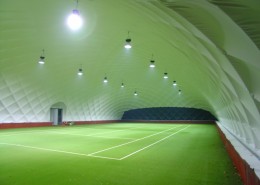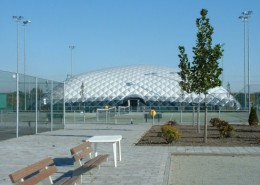TENNIS DOMES
More and more tennis clubs are deciding to have their outdoor tennis courts covered in the winter using an air dome. This ensures that a temporary sports centre or a tennis dome can be put in place that ensures that you do not have to rely on weather conditions.
The most important reasons for this are the following:
- interesting financial feasibility of a Poly air dome when compared to a permanent building;
- not having to hire expensive ‘winter hours’ elsewhere;
- there will also be an active winter club life;
- additional training hours for young people and competition players;
- Option of organising winter activities such as tournaments and winter competitions;
- additional income; because of a lack of tennis domes in the area;
- The Poly air dome can be disassembled in a few hours.
Assembling a tennis dome seems to be a very big step for clubs, however, in practice it is not such a big job. Dozens of national and international clubs have already taken the step.
Poly-Ned will guide you through the whole process and will assist in drawing up an operational calculation, when applying for planning permission and will see the whole building process through to the end with you.
A number of general aspects are important with regard to Poly air domes. These are: lighting, connection to a permanent building/property, the supporting technology, the annual mountng and demounting and the service and maintenance.

























